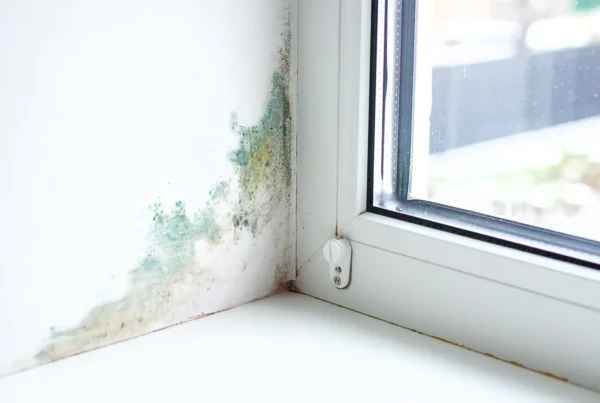The immune system has been a hot topic over the past couple of years. I’ve seen theories being thrown out right and left. But honestly, most people really don’t know that much about how the immune system actually works.
The immune system is extremely complex. And often people don’t take the time — or feel the need — to dig deep and understand all the mechanisms our bodies use to protect and heal us from disease.
But if you have a child with PANS/PANDAS, you aren’t “most people”. You’re trying to figure out what to do to help your little human recover and get back to acting and feeling like themself.
PANS/PANDAS are autoimmune disorders, which means that the immune system has gone off track. But before you understand what’s gone wrong, it’s helpful to know what’s happening when things go right.
So for the next couple of articles, we are going to do a little Immunity 101. I’m going to cut through the confusion and misinformation people have been spreading for the past couple years and look at the immune system — how it works, and what happens when it doesn’t.
🚨 IF YOU WANT TO UNDERSTAND HOW PANS/PANDAS IS AFFECTING YOUR CHILD AND WHAT YOU CAN DO TO HELP THEM, UNDERSTANDING THE IMMUNE SYSTEM IS KEY. 🚨
When many people think of immunity, they think only of the antibodies their body produces to fight disease. And antibodies play an important role in keeping us healthy. But the immune system isn’t just one thing. It’s complex and multiplayered.
Generally, the immune system consists of cells, tissues, and organs working together to protect the body from foreign invaders that threaten you in one way or another.
WHAT TRIGGERS THE IMMUNE SYSTEM?
Your immune system is on alert when any potentially harmful substances enter your body. So, yes the immune system is on the look-out for things like bacteria and viruses that can cause respiratory illness. But your immune system isn’t limited to just fighting bacteria and viruses.
Let’s start with a little vocabulary.
Antigens — the foreign substances that trigger an immune response. Antigens include viruses and bacteria, which can cause a variety of illnesses from the common cold, to a life-threatening infection. But that’s not all.
ANTIGENS ALSO INCLUDE:
👉 Parasites — organisms that benefit from the host without contributing anything. Internal parasites include things like tapeworms and pinworms.
👉 Fungus — including mold, mildew, and yeasts. Fungi can cause a variety of issues in humans from candida overgrowth to athlete’s foot.
👉 Toxins — pesticides, chemicals, heavy metals, etc. Yes, your body deals with man-made antigens as well. We come into contact with toxins all day every day just by living our lives. From the containers that hold our food, to the manufacturing chemicals in our carpets, toxins are everywhere. If you’d like to learn more about the toxins we’re commonly exposed to and how they affect our health, read this article.
WHICH PARTS OF THE BODY MAKE UP THE IMMUNE SYSTEM?
When you were in school, you probably learned about organs and systems. You learned about the cardiovascular system and how it’s made up of the heart, veins, arteries, and capillaries. But the parts of the body involved in the immune system aren’t so clear cut. And even now, scientists are discovering more immune mechanisms that were previously unknown.
This week we’ll look at the organs involved in your body’s immune response. In the next article, we’ll put the immune system under the microscope and look at the cells and microscopic mechanisms your body uses to fight off antigens and heal.
The organs involved in the immune system are called the lymphoid organs. Lymphoid organs are part of the lymphatic system.
Lymphatic system — organs, tissues, and vessels that work together to move lymph from your tissues back into your bloodstream. The lymphatic system does a lot for you, including protecting your body from antigens, maintaining fluid levels, removing cellular waste, and absorbing fats from the digestive tract.
Lymph — the watery, colorless fluid that is moved around the body by the lymphatic system. Lymph comes from the plasma that seeps into the tissues after it delivers nutrients and receives waste products from the body’s cells and tissues.
WHAT ARE THE ORGANS INVOLVED IN THE LYMPHATIC SYSTEM?
THYMUS
The thymus is a small, irregularly shaped gland located between the lungs under the breastbone. This gland is part of both the immune and endocrine system. It’s responsible for maturing lymphocytes into T-cells — we’ll get into the specifics of the cells involved in immunity in the next article.
SPLEEN
The spleen is a small organ above the stomach inside the left side of your rib cage. The spleen makes white blood cells and antibodies that protect you from infection.
TONSILS
The tonsils are small organs located in the throat and palate. They prevent antigens from traveling further into the body. They also contain white blood cells. Tonsils serve an important immune function and aren’t as expendable as some doctors might lead you to believe.
THE APPENDIX
The appendix is another organ that is often seen as unnecessary. It’s best known for getting infected. But scientists have learned that this 4-inch tube attached to your large intestine is a storehouse for beneficial gut bacteria (which are also a pivotal part of the immune system).
GUT-ASSOCIATED LYMPHOID TISSUE (GALT)
Lymphoid tissue consists of the cells and organs that make up the lymphatic system. You can find a lot of lymphoid tissue in the gut. In fact, the gut contains the largest lymphoid tissue mass anywhere in the body. GALT includes a variety of immune cells including B and T lymphocytes, macrophages, antigen-presenting cells, and lymphocytes. In the next article we’ll get into the nitty gritty of all these types of cells.
The lymphatic system also includes a network of capillaries, vessels, nodes, and ducts, which collect and transport the lymph. The blood and lymph vessels exchange fluids. This exchange allows lymphocytes (a type of white blood cell) to patrol the body for infection or potential antigens.
You have clumps of lymphoid tissues all through your body, but the greatest concentration is found in the tonsils, adenoids, and appendix.
HOW DOES THE IMMUNE SYSTEM ACTUALLY WORK?
The immune system utilizes a variety of cells and mechanisms in the complex battle to ward off antigens and heal. We’ll get into the nitty gritty of this in Part 2 of this article. Stay tuned!
In the meantime, if your child has been diagnosed with PANS/PANDAS, I know you’re looking for answers and help. I’m here to help and support you, both by providing individual care through my practice and by offering education and support.
WHERE CAN I GET HELP?
✔ If you are still searching for a diagnosis and want more clarity on whether your child might have PANS or PANDAS, take our free PANS/PANDAS Symptom Assessment. Explore how your child’s symptoms might fit into the official PANS and PANDAS diagnostic criteria, and gain valuable knowledge on how the process works. To take the symptom assessment, click here.
✔ For easy to implement approaches to reducing inflammation in your child’s body, download my free eBook, Healing from PANS/PANDAS and Autoimmune Encephalitis. Learn why healing your child’s gut is always step one when it comes to brain health, how the brain detoxifies and what to do to facilitate this process, the role of the autonomic nervous system in healing, and so much more.! To download your free copy, click here.
✔ Sign-up for my email newsletter – you will receive tons of research and actionable information in this biweekly resource
✔ Join the private Facebook community for parents of children with PANS/PANDAS and other neuroinflammatory brain conditions
✔ And finally, if you are interested in getting to the root of your child’s diagnosis and reversing symptoms for good, join me in my Foundations in Healing Jumpstart Program. The Foundations Program is a highly mentored, 8-week learning intensive for parents of children with inflammatory brain conditions like PANS/PANDAS, autism, ADHD, anxiety/depression, and Lyme. In addition to gaining access to my proven methodologies and proprietary knowledge, you will also be learning directly from me in an intimate group setting. For more on the Jumpstart Mentorship program, click here.
And remember, your child’s body is hardwired to heal, we just need to provide the tools. We are here for you!
For more information on the Foundations Program, click here
To hear more about what former participants are saying, click here.
Resources:
HTTPS://WWW.SCIENCEDAILY.COM/RELEASES/2017/01/170109162333.HTM
HTTPS://MY.CLEVELANDCLINIC.ORG/HEALTH/ARTICLES/21199-LYMPHATIC-SYSTEM
HTTPS://CANCER.CA/EN/CANCER-INFORMATION/CANCER-TYPES/THYMUS/WHAT-IS-THYMUS-CANCER/THE-THYMUS
HTTPS://MY.CLEVELANDCLINIC.ORG/HEALTH/BODY/21567-SPLEEN







